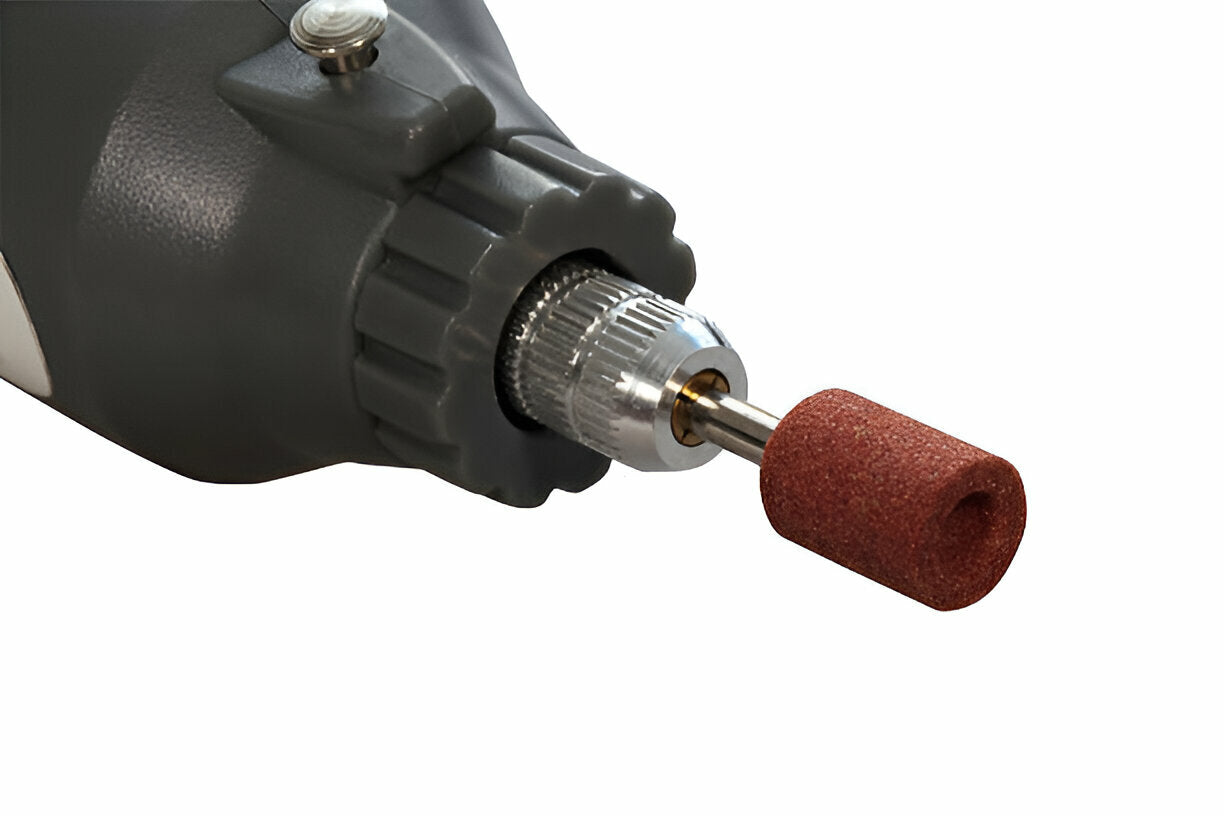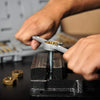
Safety Tips for Using a Rotary Tool Set
A rotary tool kit is an indispensable asset in the arsenal of any avid DIY enthusiast or professional craftsman. Known for its versatility, this tool can perform a wide array of tasks – from intricate carving to detailed polishing. However, its capability to easily adapt to numerous applications also brings forth a range of safety considerations that users must heed.
Neglecting these safety tips can lead not only to damaging the tool or the project but, more critically, to personal injury. This comprehensive guide aims to highlight essential safety tips for using a rotary tool set, ensuring that every project is not only successful but also conducted in a safe and secure manner.
Understanding Your Tool
Before undertaking any project, it’s paramount to fully understand the functional capabilities and safety features of your rotary tool kit.
- Study the User Manual: Familiarize yourself with the tool’s operational guidelines, safety instructions, and recommendations directly from the manufacturer.
- Identify the Attachments and Their Purposes: Each attachment serves a specific function. Knowing when and how to use them correctly can prevent accidents.
- Regular Maintenance Checks: Inspect your tool regularly for signs of wear or damage. A well-maintained tool is less likely to malfunction and cause injuries.
Related Article: Choosing the Best Rotary Tool Set: A Comprehensive Guide
Wearing Appropriate Personal Protective Equipment (PPE)
Personal Protective Equipment is your first line of defense against potential hazards when working with any power tool.
- Eye Protection: Safety goggles or glasses protect your eyes from flying debris, a common occurrence when cutting or grinding materials.
- Hearing Protection: Prolonged exposure to the noise generated by high-speed rotary tools can impair hearing over time. Earplugs or earmuffs are recommended.
- Respiratory Protection: Dust masks or respirators are essential, especially when working with materials that produce fine particulate matter.
Preparing Your Workspace
A safe workspace is critical for safe operations. It minimizes risks and helps in maintaining focus on the task at hand.
- Ensure a Clutter-Free Environment: Keep the working area clear of unnecessary items that could obstruct movement or inadvertently come into contact with the rotating tool.
- Adequate Illumination: Good lighting is crucial for precision work and spotting any potential hazards in your working area.
- Stable Work Surface: A firm, stable surface is necessary to securely hold your workpiece and prevent accidental slips that could lead to injury.
Electrical Safety
Given that most rotary tools are electrically powered, observing electrical safety precautions is essential.
- Inspect Power Cords and Batteries: Before use, check for frayed cords, damaged insulation, and ensure batteries are correctly installed and not damaged.
- Avoid Water: Electrical tools should never be used in wet or damp conditions due to the risk of electric shock.
- Safe Power Sources: Use grounded outlets and avoid overloading circuits. Consider a residual-current device (RCD) for additional protection.
Handling Speed and Pressure
The speed and pressure applied during use significantly affect both the outcome of your project and your safety.
- Start Slow: Begin your work at a lower speed setting to establish control, then adjust as necessary for the material and task.
- Consistent Pressure: Apply steady, moderate pressure. Excessive force can break attachments or cause the tool to slip.
- Monitor Tool Performance: Be alert to changes in sound or performance that might indicate a problem or misapplication of speed/pressure.
Safe Use of Attachments
Attachments enhance the versatility of rotary tools but require careful handling and awareness of their safety implications.
- Correct Installation: Ensure attachments are securely fastened according to the manufacturer's instructions to avoid detachment during operation.
- Use as Intended: Only use attachments for their designed purpose to prevent breakage or injury.
- Regular Inspection: Check attachments for damage or wear before each use. Replace any that are compromised.
Proper Tool Handling and Storage
How you handle and store your tool can prevent accidents and extend its lifespan.
- Disconnect When Not in Use: Always unplug or remove batteries from the tool when changing attachments or performing maintenance.
- Secure Storage: Store the tool and its accessories in a secure, dry place out of reach of children and unauthorized users.
- Organize for Safety: Keep attachments and accessories neatly organized to prevent damage and ensure easy accessibility.
Mitigating Dust and Debris Risks
The creation of dust and debris during the use of rotary tools poses inhalation and visibility hazards.
- Effective Dust Management: Use dust extraction systems or work in well-ventilated areas to minimize airborne particles.
- Regular Cleanup: Keep the work area free of accumulation of dust and debris to maintain clear visibility and reduce fire risk.
- Protect Surrounding Areas: Cover nearby surfaces and use dust collection accessories to contain debris.
Staying Focused and Alert
Distractions and fatigue are major contributors to accidents in any workshop environment.
- Avoid Distractions: Maintain focus on the task. Do not operate the tool when distracted or in a hurry.
- Recognize Fatigue: Take regular breaks to prevent tiredness from impacting your concentration and control.
- Clear Communication: Inform those around you of your activities to prevent unexpected interruptions.
Recognizing When to Seek Professional Assistance
Some tasks may exceed your skill level or the capabilities of your tool. Being able to recognize these limits is crucial for safety.
- Complex or High-Risk Projects: Consider professional help for tasks that pose significant risks or require specialized expertise.
- Servicing and Repairs: Have the tool serviced or repaired by qualified personnel, especially for electrical faults.
- Continual Learning: Commit to ongoing learning about safety practices, tool capabilities, and novel uses to enhance both safety and skill.
Related Article: Common Mistakes to Avoid When Buying a Rotary Tool Kit
Empowering Safe and Creative Endeavors
Utilizing a Rotary tool kit effectively marries creativity with precision in various projects. However, the true craftsmanship lies not only in the ability to create but also in implementing stringent safety practices. By adhering to these guidelines, enthusiasts and professionals alike can ensure that their ventures into the world of making and mending are both fruitful and safe. Safety, after all, is the bedrock upon which successful projects are built. Adopting a proactive approach to safety can transform the way we engage with our tools, enabling us to achieve new heights in our creative journeys while safeguarding our most valuable asset – our well-being.



